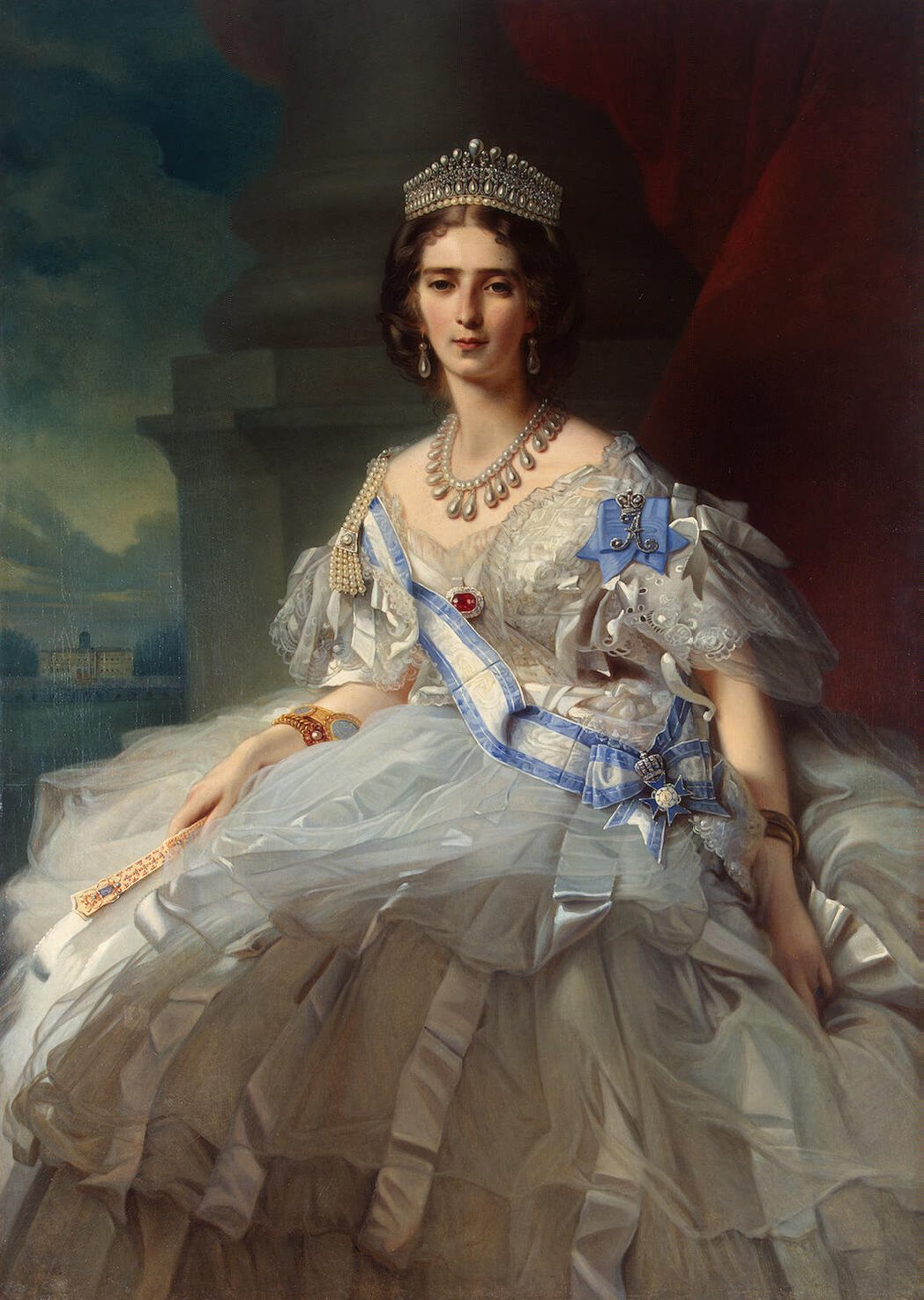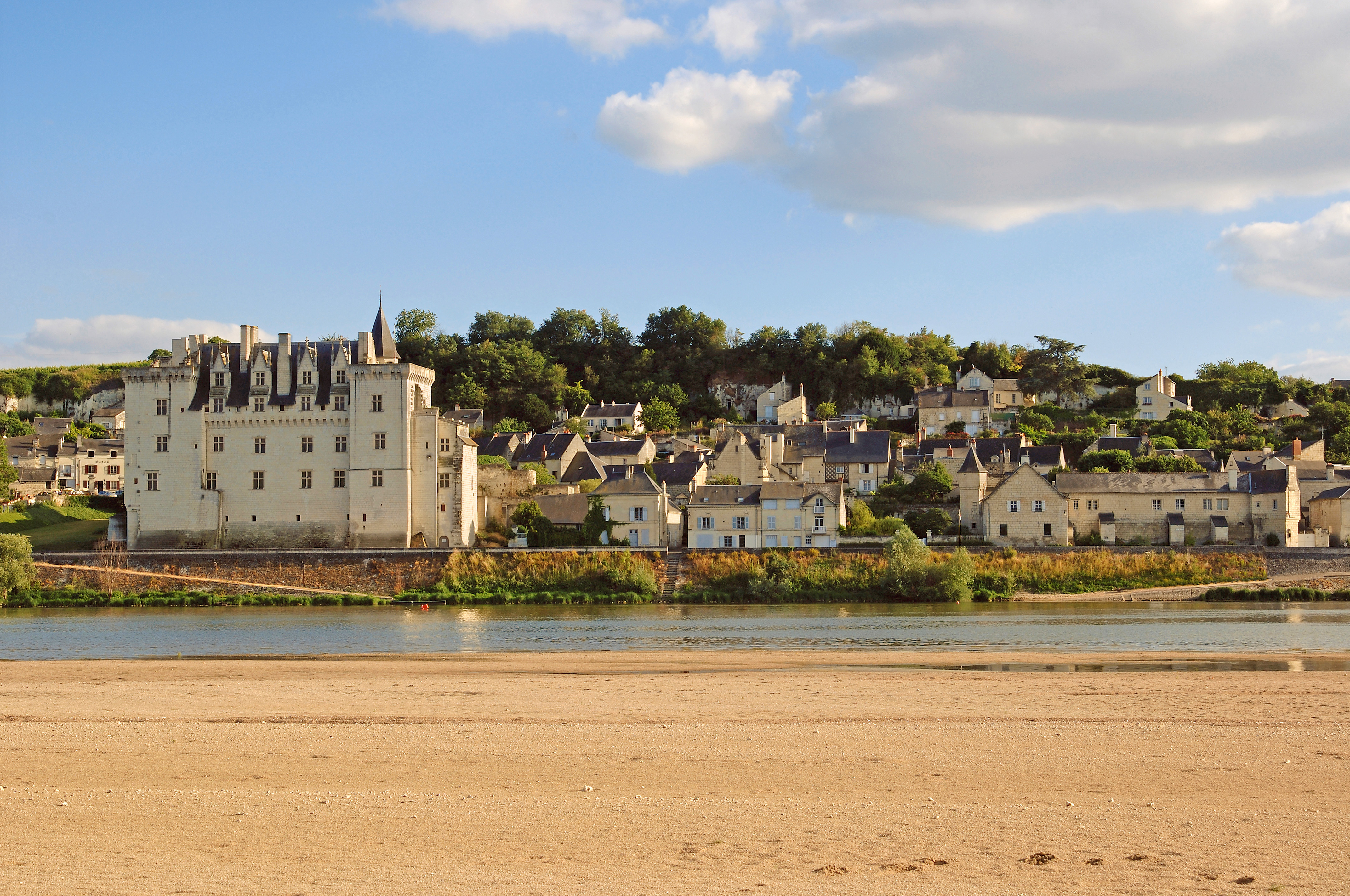|
Françoise De Maridor
Françoise de Maridor (c. 1558 - 29 September 1620) was a French courtier, a lady in waiting to Catherine de Medici. She was born at the Château de la Freslonnière around 1558, the daughter of Olivier de Maridor, lord of Vaux-en-Belin, Saint-Ouen, La Freslonnière, and Château-Sénéchal and Anne daughter of Jacques I er Goyon de Matignon. During her first marriage in 1574, she married Jean de Coësmes, lord of Lucé, one of the richest lords of Sarthe . He died facing the Huguenots, during the siege of Lusignan in December 1574 or January 1575. Widowed, she was courted by Charles de La Rochefoucauld - Randan (nephew of François III de La Rochefoucauld ) and Jean III or II de Beaumanoir - Lavardin, who end up fighting for her (in May 1575, Beaumanoir kills Randan in a duel and took refuge with Henri de Navarre in Gascony). She finally remarried on January 10, 1576, with Charles de Chambes, Count de Montsoreau, Chambellan and Grand-hunter of the Duke of Alençon and of ... [...More Info...] [...Related Items...] OR: [Wikipedia] [Google] [Baidu] |
Lady In Waiting
A lady-in-waiting or court lady is a female personal assistant at a court, attending on a royal woman or a high-ranking noblewoman. Historically, in Europe, a lady-in-waiting was often a noblewoman but of lower rank than the woman to whom she attended. Although she may either have received a retainer or may not have received compensation for the service she rendered, a lady-in-waiting was considered more of a secretary, courtier, or companion to her mistress than a servant. In other parts of the world, the lady-in-waiting, often referred to as ''palace woman'', was in practice a servant or a slave rather than a high-ranking woman, but still had about the same tasks, functioning as companion and secretary to her mistress. In courts where polygamy was practised, a court lady was formally available to the monarch for sexual services, and she could become his wife, consort, courtesan, or concubine. ''Lady-in-waiting'' or ''court lady'' is often a generic term for women ... [...More Info...] [...Related Items...] OR: [Wikipedia] [Google] [Baidu] |
Catherine De Medici
Catherine de' Medici ( it, Caterina de' Medici, ; french: Catherine de Médicis, ; 13 April 1519 – 5 January 1589) was an Florentine noblewoman born into the Medici family. She was Queen of France from 1547 to 1559 by marriage to King Henry II and the mother of French Kings Francis II, Charles IX, and Henry III. The years during which her sons reigned have been called "the age of Catherine de' Medici" since she had extensive, if at times varying, influence in the political life of France. Catherine was born in Florence to Lorenzo de' Medici, Duke of Urbino, and Madeleine de La Tour d'Auvergne. In 1533, at the age of 14, Catherine married Henry, the second son of King Francis I and Queen Claude of France. Catherine's marriage was arranged by her uncle Pope Clement VII. Henry excluded Catherine from participating in state affairs and instead showered favours on his chief mistress, Diane de Poitiers, who wielded much influence over him. Henry's death in 1559 thrus ... [...More Info...] [...Related Items...] OR: [Wikipedia] [Google] [Baidu] |
Château De La Freslonnière
A château (; plural: châteaux) is a manor house or residence of the lord of the manor, or a fine country house of nobility or gentry, with or without fortifications, originally, and still most frequently, in French-speaking regions. Nowadays a ''château'' may be any stately residence built in a French style; the term is additionally often used for a winegrower's estate, especially in the Bordeaux region of France. Definition The word château is a French word that has entered the English language, where its meaning is more specific than it is in French. The French word ''château'' denotes buildings as diverse as a medieval fortress, a Renaissance palace and a fine 19th-century country house. Care should therefore be taken when translating the French word ''château'' into English, noting the nature of the building in question. Most French châteaux are "palaces" or fine "country houses" rather than "castles", and for these, the word "château" is appropriate in English. ... [...More Info...] [...Related Items...] OR: [Wikipedia] [Google] [Baidu] |
Saint-Ouen-en-Belin
Saint-Ouen-en-Belin is a commune in the Sarthe department in the region of Pays de la Loire in north-western France France (), officially the French Republic ( ), is a country primarily located in Western Europe. It also comprises of Overseas France, overseas regions and territories in the Americas and the Atlantic Ocean, Atlantic, Pacific Ocean, Pac .... See also * Communes of the Sarthe department References Communes of Sarthe {{Sarthe-geo-stub ... [...More Info...] [...Related Items...] OR: [Wikipedia] [Google] [Baidu] |
La Freslonnière
LA most frequently refers to Los Angeles, the second largest city in the United States. La, LA, or L.A. may also refer to: Arts and entertainment Music * La (musical note), or A, the sixth note * "L.A.", a song by Elliott Smith on ''Figure 8'' (album) * ''L.A.'' (EP), by Teddy Thompson * ''L.A. (Light Album)'', a Beach Boys album * "L.A." (Neil Young song), 1973 * The La's, an English rock band * L.A. Reid, a prominent music producer * Yung L.A., a rapper * Lady A, an American country music trio * "L.A." (Amy Macdonald song), 2007 * "La", a song by Australian-Israeli singer-songwriter Old Man River Other media * l(a, a poem by E. E. Cummings * La (Tarzan), fictional queen of the lost city of Opar (Tarzan) * ''Lá'', later known as Lá Nua, an Irish language newspaper * La7, an Italian television channel * LucasArts, an American video game developer and publisher * Liber Annuus, academic journal Business, organizations, and government agencies * L.A. Screenings, a ... [...More Info...] [...Related Items...] OR: [Wikipedia] [Google] [Baidu] |
Château De Montsoreau
The Château de Montsoreau is a Flamboyant Gothic castle in the Loire Valley, directly built in the Loire riverbed. It is located in the small market town of Montsoreau, in the Maine-et-Loire ''département'' of France, close to Saumur, Chinon, Fontevraud-l'Abbaye and Candes-Saint-Martin. The Château de Montsoreau is situated at the confluence of two rivers, the Loire and the Vienne, and the meeting point of three historical regions: Anjou, Poitou, and Touraine. It is the only château of the Loire Valley built directly in the Loire riverbed. A Gallo-Roman origin has been verified for the settlement of Montsoreau but not confirmed for the castle, even though a fluted column made of stone from a Gallo-Roman temple or a public building was found in the moat during the restoration works of the end of the 20th century. The first written sources are from the 6th century with the domain of Restis, but it was only with the construction of a fortress at the end of the 10th century ... [...More Info...] [...Related Items...] OR: [Wikipedia] [Google] [Baidu] |
La Dame De Monsoreau
''La Dame de Monsoreau'' is a historical novel by Alexandre Dumas, père published in 1846. It owes its name to the counts who owned the famous château de Montsoreau. The novel is concerned with fraternal royal strife at the court of Henri III Henry III (french: Henri III, né Alexandre Édouard; pl, Henryk Walezy; lt, Henrikas Valua; 19 September 1551 – 2 August 1589) was King of France from 1574 until his assassination in 1589, as well as King of Poland and Grand Duke of .... Tragically caught between the millstones of history are the gallant Count de Bussy and the woman he adores, la Dame de Monsoreau. Chicot the Jester is a character in the novel, and in some English translations he is the title character. External links * 1846 French novels French novels adapted into films Novels set in France Novels set in the 16th century Novels by Alexandre Dumas Articles containing video clips Cultural depictions of Henry III of France {{1840s-his ... [...More Info...] [...Related Items...] OR: [Wikipedia] [Google] [Baidu] |
Alexandre Dumas
Alexandre Dumas (, ; ; born Dumas Davy de la Pailleterie (), 24 July 1802 – 5 December 1870), also known as Alexandre Dumas père (where '' '' is French for 'father', to distinguish him from his son Alexandre Dumas fils), was a French writer. His works have been translated into many languages and he is one of the most widely read French authors. Many of his historical novels of adventure were originally published as serials, including '' The Count of Monte Cristo'', '' The Three Musketeers'', '' Twenty Years After'' and '' The Vicomte of Bragelonne: Ten Years Later''. His novels have been adapted since the early twentieth century into nearly 200 films. Prolific in several genres, Dumas began his career by writing plays, which were successfully produced from the first. He also wrote numerous magazine articles and travel books; his published works totalled 100,000 pages. In the 1840s, Dumas founded the Théâtre Historique in Paris. His father, General Thomas-Alexandre Dumas ... [...More Info...] [...Related Items...] OR: [Wikipedia] [Google] [Baidu] |
1550s Births
Year 155 ( CLV) was a common year starting on Tuesday (link will display the full calendar) of the Julian calendar. At the time, it was known as the Year of the Consulship of Severus and Rufinus (or, less frequently, year 908 '' Ab urbe condita''). The denomination 155 for this year has been used since the early medieval period, when the Anno Domini calendar era became the prevalent method in Europe for naming years. Births * Cao Cao, Chinese statesman and warlord (d. 220) * Dio Cassius, Roman historian (d. c. 235) * Tertullian, Roman Christian theologian (d. c. 240) * Sun Jian, Chinese general and warlord (d. 191 Year 191 (Roman numerals, CXCI) was a common year starting on Friday (link will display the full calendar) of the Julian calendar. At the time, it was known as the Year of the Consulship of Apronianus and Bradua (or, less frequently, year 944 ' ...) Deaths * Pius I, Roman bishop * Polycarp, bishop of Smyrna (b. AD 65) References {{DEFAULTSORT:155 ... [...More Info...] [...Related Items...] OR: [Wikipedia] [Google] [Baidu] |
1620 Deaths
Sixteen or 16 may refer to: * 16 (number), the natural number following 15 and preceding 17 *one of the years 16 BC, AD 16, 1916, 2016 Films * ''Pathinaaru'' or ''Sixteen'', a 2010 Tamil film * ''Sixteen'' (1943 film), a 1943 Argentine film directed by Carlos Hugo Christensen * ''Sixteen'' (2013 Indian film), a 2013 Hindi film * ''Sixteen'' (2013 British film), a 2013 British film by director Rob Brown Music *The Sixteen, an English choir *16 (band), a sludge metal band * Sixteen (Polish band), a Polish band Albums * ''16'' (Robin album), a 2014 album by Robin * 16 (Madhouse album), a 1987 album by Madhouse * ''Sixteen'' (album), a 1983 album by Stacy Lattisaw *''Sixteen'' , a 2005 album by Shook Ones * ''16'', a 2020 album by Wejdene Songs * "16" (Sneaky Sound System song), 2009 * "Sixteen" (Thomas Rhett song), 2017 * "Sixteen" (Ellie Goulding song), 2019 *"16", by Craig David from '' Following My Intuition'', 2016 *"16", by Green Day from ''39/Smooth'', 1990 *"16", ... [...More Info...] [...Related Items...] OR: [Wikipedia] [Google] [Baidu] |




